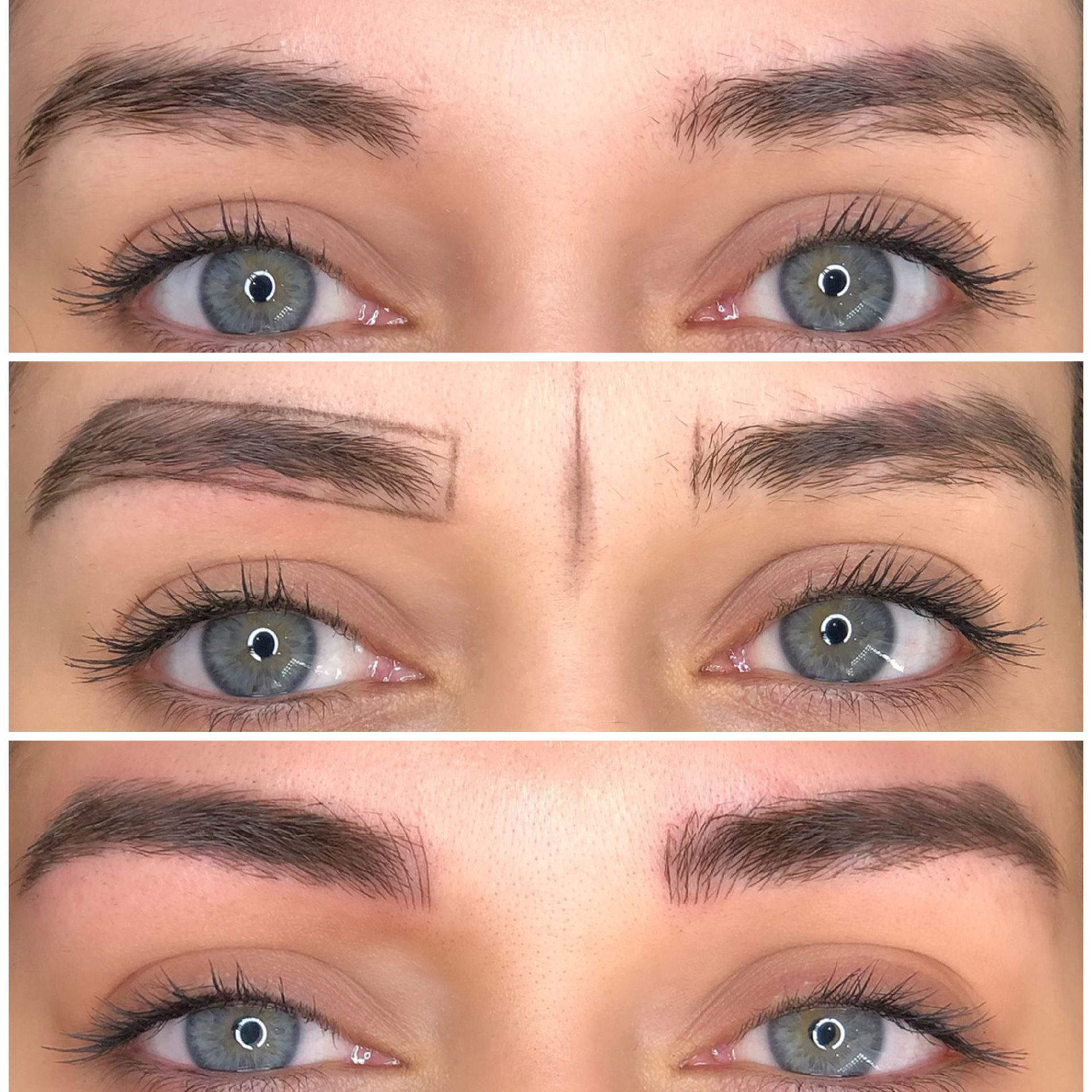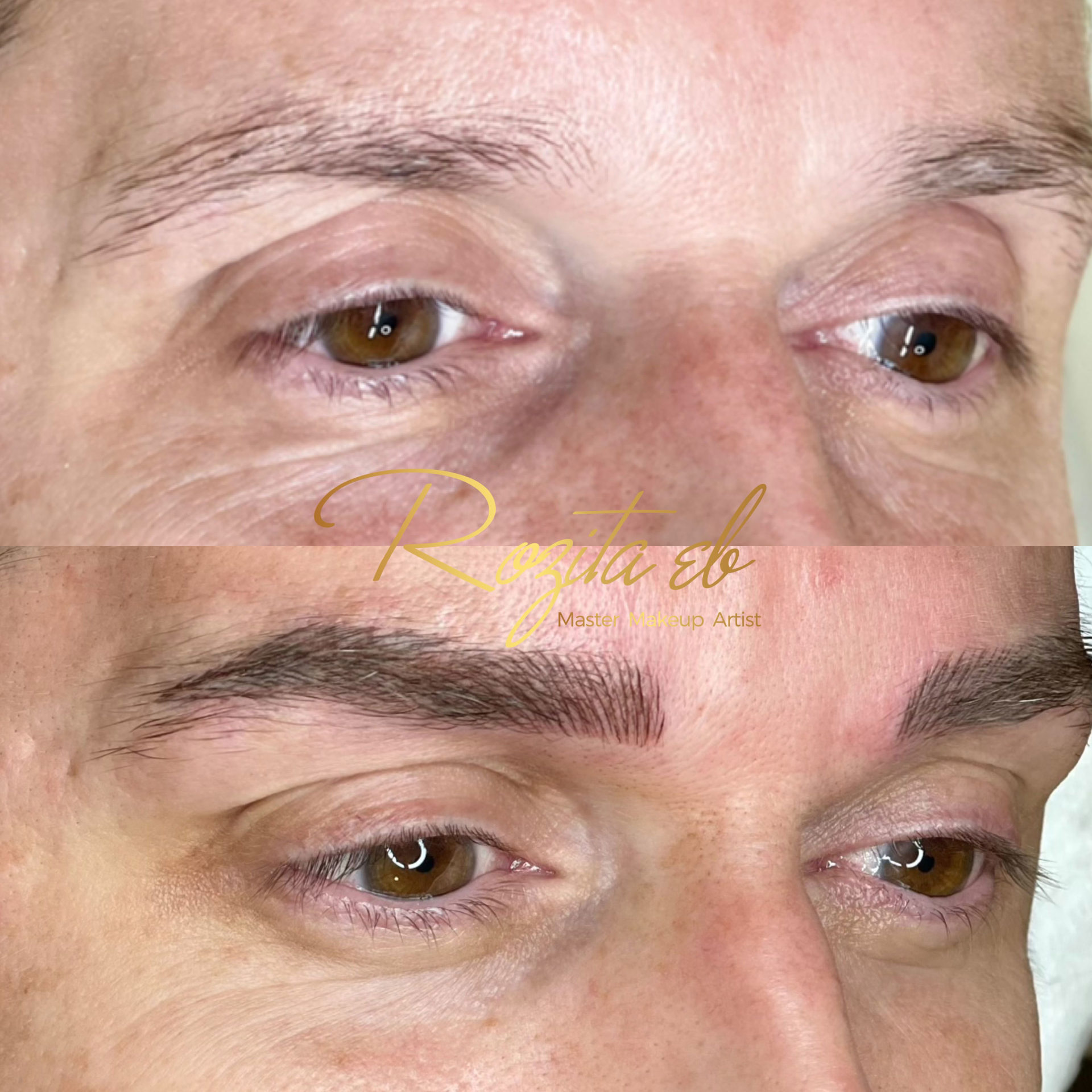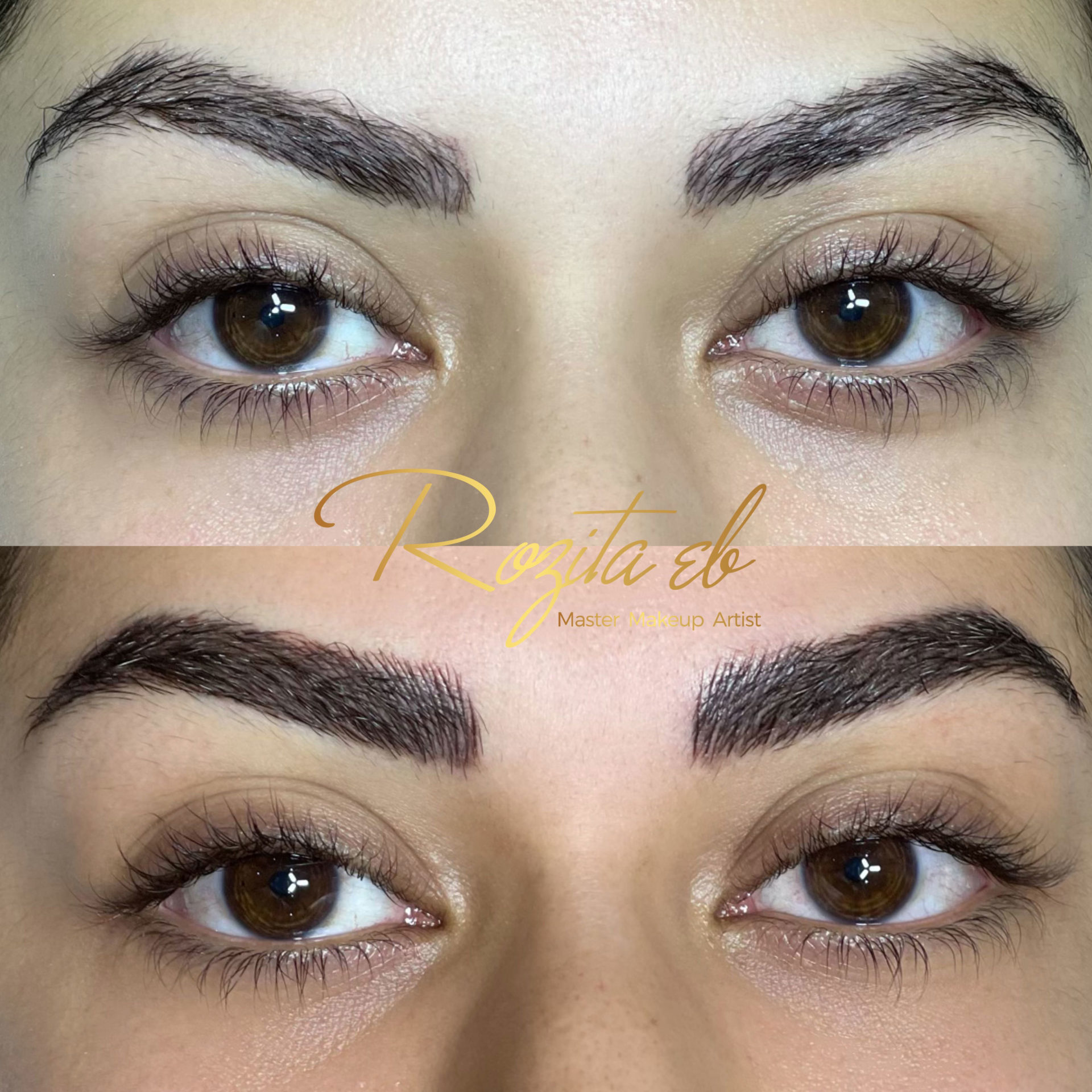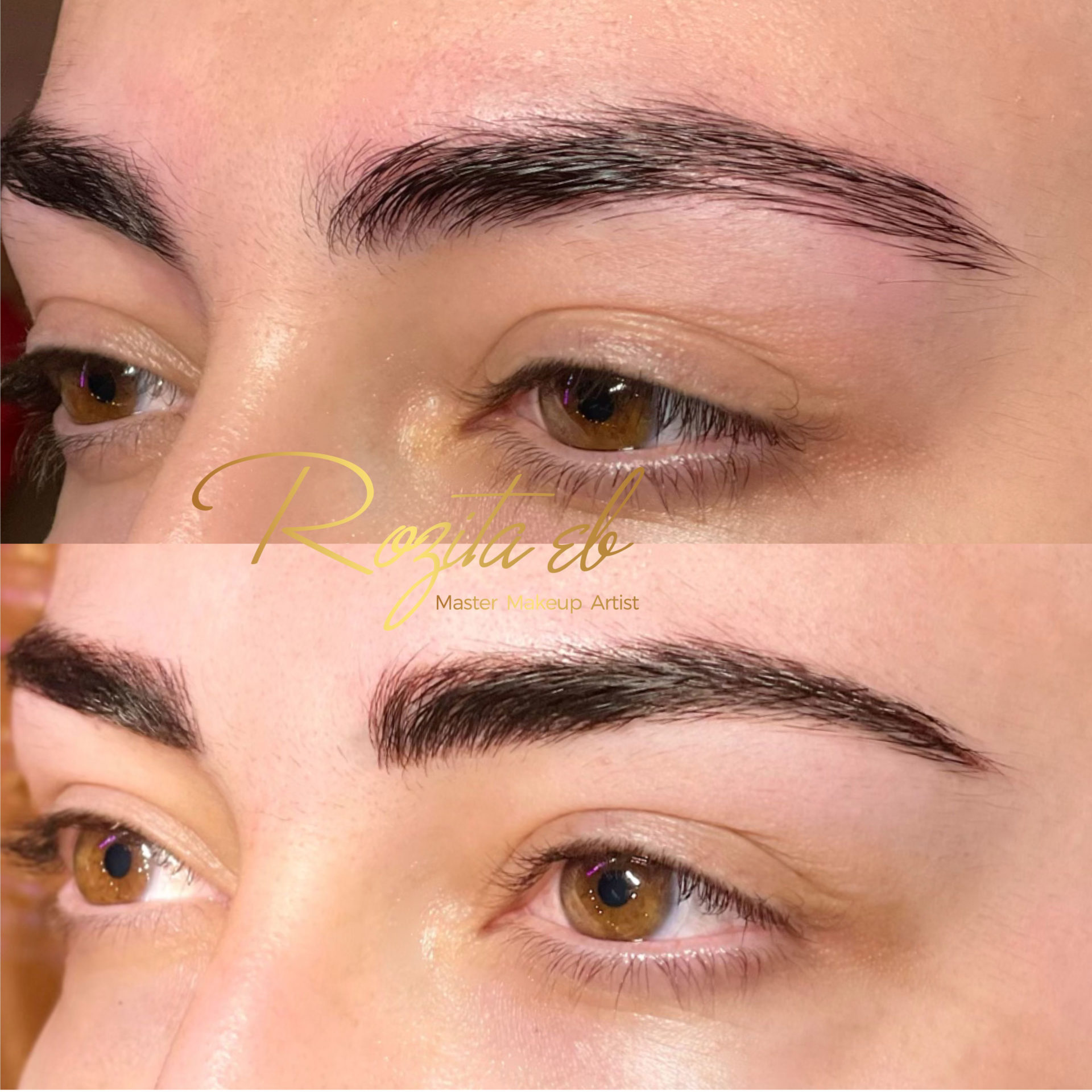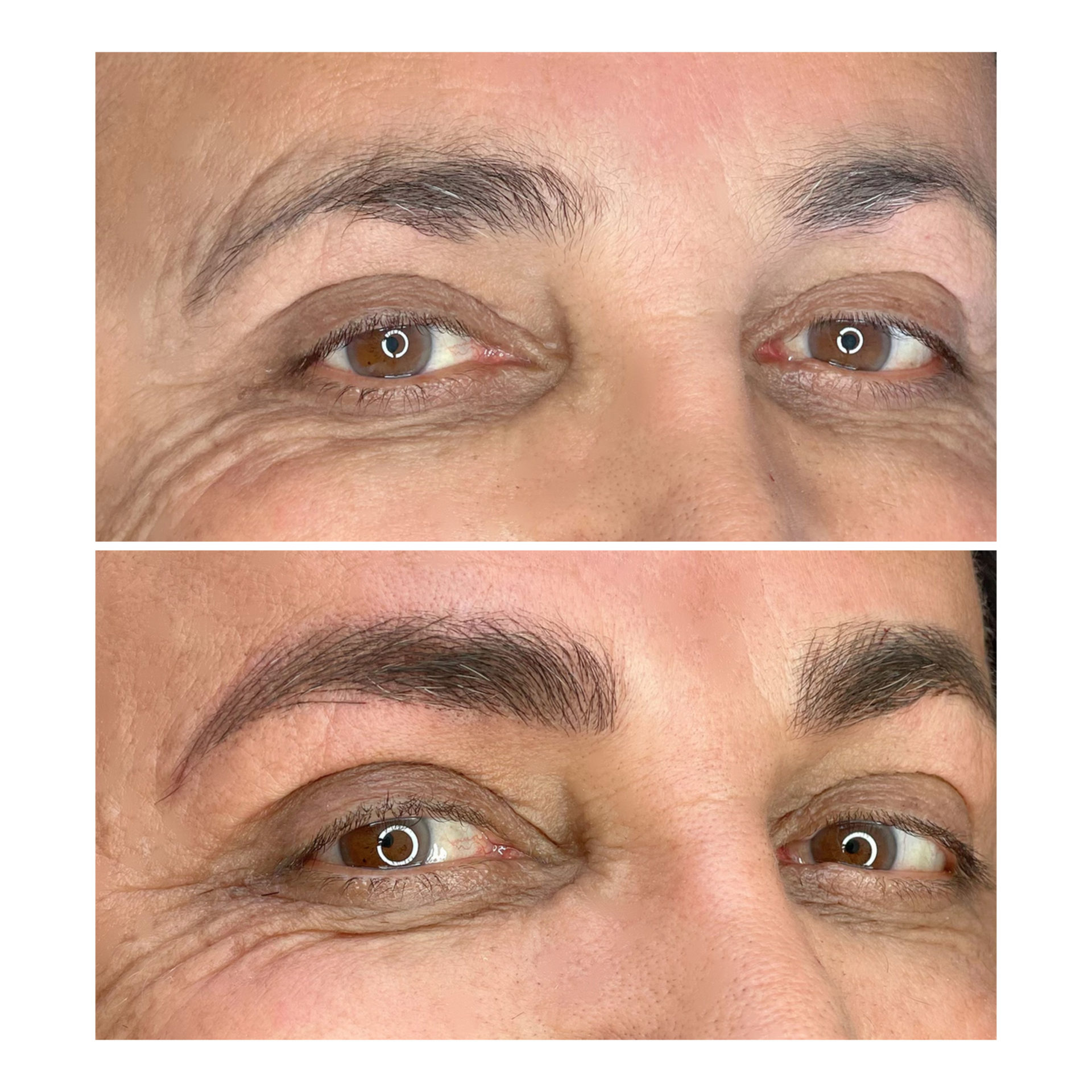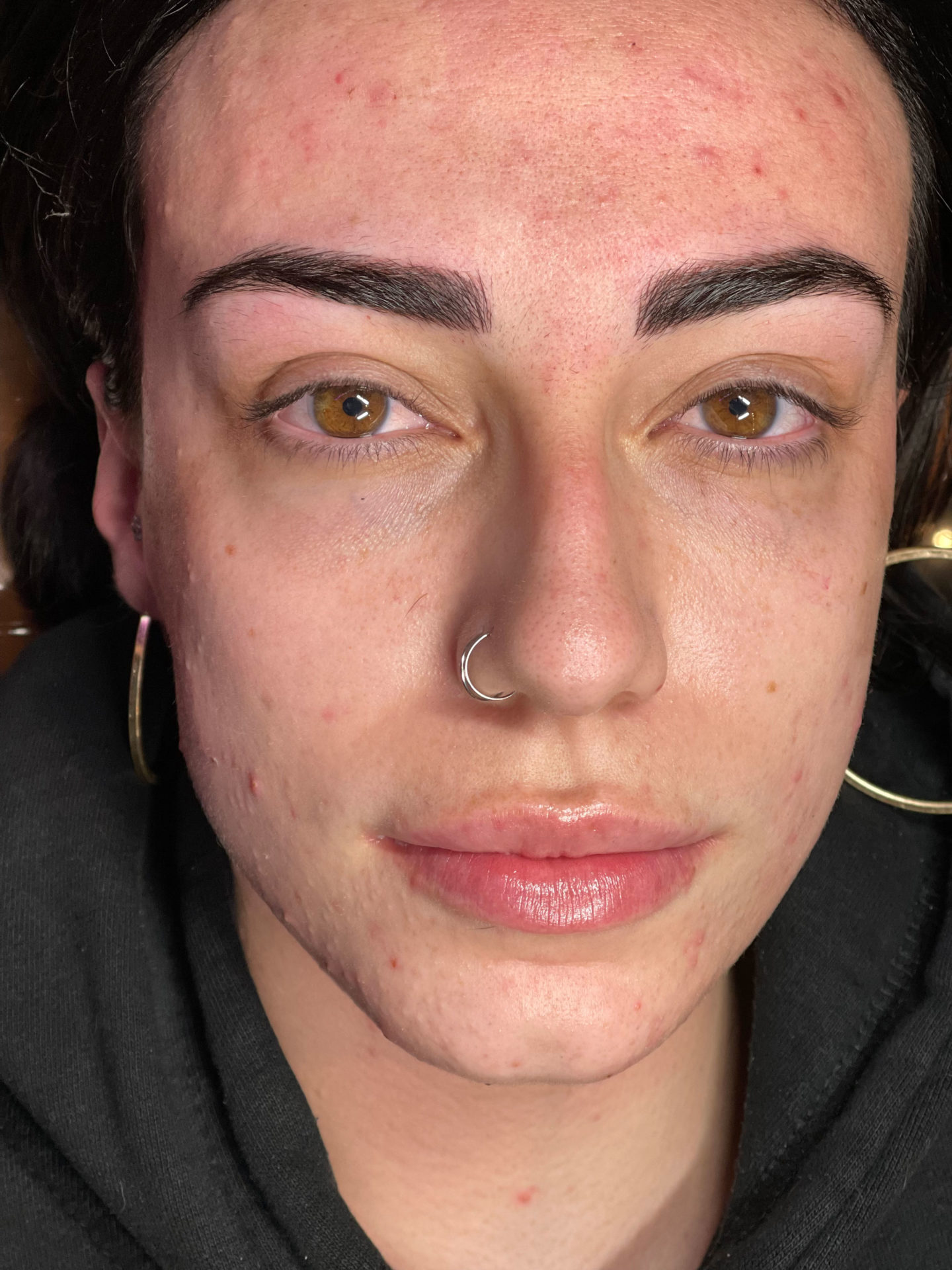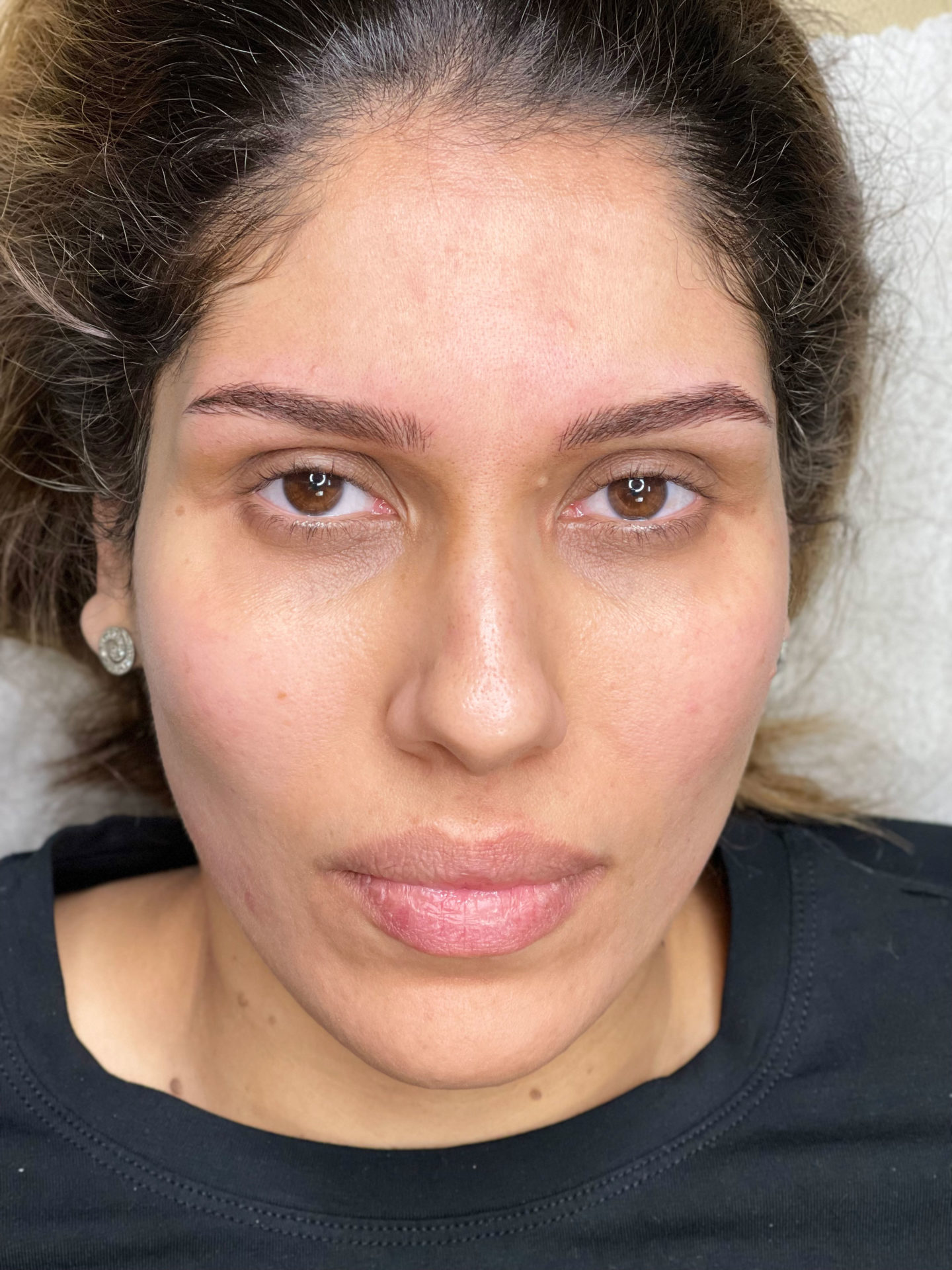Microblading is called what it is because it involves using a small blade to deposit pigment into the skin. It is designed to re-create the shape and fullness of the eyebrows.
As a result, one disadvantage of microblading is that it tends to fade faster than other permanent makeup jobs. As a result, most microblading jobs need to be touched up anywhere between six and 18 months. Some have been known to last up to three years, however, that’s not very common. However, some clients prefer microblading to simple eyebrow tattooing because of its more natural look.
Believe it or not, the actual procedure is the most straightforward part of the process.
The initial consultation involves measuring the exact center of the face, the shape, and the space between the eyes. Then our artist sketches the brows showing the right thickness and arch for each of our clients.
Some clients express concern about whether it may ruin the growth of their natural eyebrow hair. The short answer is no. It doesn’t boost your natural hair’s growth, but it doesn’t inhibit it, either.
The procedure typically takes between two and a half to three hours.
Microblading is meant to be more of a temporary solution for anything from overplucked eyebrows to hair loss due to chemotherapy. However, do be aware that microblading has been known to lead to very light scars at times. In addition, skin flaking is common within a week or two after the procedure. That’s natural because of the top layer of the strokes peeling off. However, the thicker layer should veil the rest of the pigment for at least the next six months.
Before Care
- DO NOT work out the day of the procedure.
- DO NOT tan or have sunburned face.
- DO NOT take Aspirin, Niacin, Vitamin E or Ibuprofen 24hrs before procedure.
- No alcohol or caffeine on the day of the procedure.
- No waxing or tinting 3 days before.
- Please note that you will be more sensitive during your menstrual cycle.
After Care
Post Procedure Care General Microblading (semi-permanent makeup) procedures are affected by the “canvas” (your skin) that they are performed on. Lifestyle, medications, smoking, metabolism, facial surgery and other procedures, and age of skin all contribute to fading. Though rare, infection is possible. If you see signs of infection such as persistent increased redness or swelling, fever, drainage, or oozing, contact your doctor immediately.
- Apply ice packs as necessary to prevent or reduce swelling.
- When the area starts to flake, leave it. Do not pick, peel or pull on the skin.
- Apply a thin coat of Vitamin A or A+D ointment (from CVS or any Drug stores) or white petroleum (such as Vaseline®) to the area as advised
- Avoid sweating such as from vigorous exercise for 24 hours.
- For at least one-week post-procedure or until healing is complete (whichever is longer): Keep your hands clean and avoid touching the affected area(s). Do not scrub or pick treated areas, Do not use peroxide or Neosporin on treated areas, Do not expose area to direct sun or to tanning beds, Avoid exposing the area excessive moisture or humidity, such as: facials, swimming, whirlpools (hot tubs), saunas, steam rooms, and steamy showers.
- Avoid Retin-A, moisturizers, glycolic acids, exfoliants and anti-aging products at all times (not just during healing) on all micropigmented areas. These can cause pigments to fade and lighten prematurely.
- Avoid tanning beds, sun, chlorine spas and pools, soap and chemicals (including skin cleansers, makeup removers, alpha hydroxyl creams, and tooth whitening toothpaste) near the treated area until healed.
- Pigments will slowly fade overtime according to one’s metabolism, skin type, sun exposure, medication, facial surgery, and smoking. Schedule maintenance visits as needed to keep it looking fresh.
- Periodic touch ups will ensure longer lasting results. Eyebrows
- For the first 3-4 days, avoid soap or cleansing products. Wash only with water and pat dry with a clean, dry cloth.
- Do not resume any method of eyebrow hair removal or coloration for at least two weeks.
- Avoid eyebrow tinting within 48 hours before or two weeks after the procedure.
Permanent makeup IS NOT recommended for any clients who are or have –
Pregnant or nursing (you can do the procedure when you are breast feeding but you need to
have milk stored for 5 days after the procedure).
- Diabetic
- Undergoing Chemotherapy (consult your doctor)
- Viral infection and/ or diseases
- Epilepsy -A Pacemaker or major heart problems
- Had an Organ transplant
- Skin irritations or Psoriasis near treated area (rashes, sunburn, acne, etc…)
- Sick (cold, flue, etc…)
- Had Botox in the past 2 months
- Used Accutane in the past year


